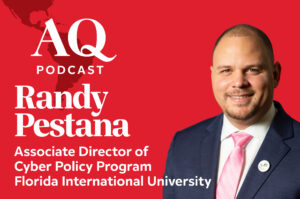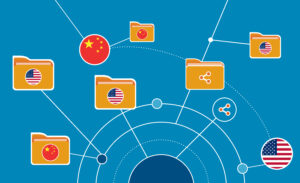
U.S. Cybersecurity Diplomacy Is Helping Counter China
A year after AQ’s special report on cybersecurity in Latin America, U.S. aid and collaboration are making some headway.

AQ Podcast: Why Latin America Is So Vulnerable to Cyberattacks
An expert on cybersecurity gives an overview of the problem — and offers potential solutions

Ciberseguridad: La próxima frontera de la competencia entre Estados Unidos y China en las Américas
Estados Unidos puede hacer más para proteger a América Latina y el Caribe de las amenazas cibernéticas y garantizar que siga siendo un socio privilegiado.

The Monroe Doctrine Turns 200. Why Won’t It Go Away?
The infamous U.S. policy went from being celebrated in Latin America to despised. Today, its chief legacy is confusion.

The Dramatic Cyberattack That Put Latin America on Alert
The region is the world’s most vulnerable to cyberattacks—and essential state services aren’t safe. What can be done?

El dramático ciberataque que puso a América Latina en alerta
La región es la más vulnerable del mundo ante los ciberataques, y los servicios esenciales del Estado no están a salvo. ¿Qué se puede hacer?

Cibersegurança: A nova fronteira da competição entre China e EUA
Os EUA podem contribuir mais para proteger a América Latina e o Caribe de ameaças cibernéticas—e dessa forma garantir que seguirá como parceiro preferencial.

Q&A: The Nonprofit Spotlighting Domestic Workers’ Commutes
Based in Bogotá, Valentina Montoya Robledo’s Invisible Commutes wants to make public transit work better for household workers.

NEW AQ: Hacker’s Paradise: Why Latin America Is So Vulnerable
The region’s love of technology comes with a hidden cost: cybervulnerability. AQ’s new special report sets out what’s at risk—and what can be done.

Nuevo en AQ: El paraíso de los hackers: Por qué América Latina es tan vulnerable
El amor de la región por la tecnología tiene un coste oculto: la cibervulnerabilidad. El nuevo informe especial de AQ expone los riesgos y lo que se puede hacer.

Why Is Latin America So Vulnerable to Cyberattacks? We Ran the Numbers.
The region’s digital adoption is high, but security measures are lacking, AQ’s rundown of key cyber indicators reveals.

O dramático ataque cibernético que colocou a América Latina em alerta
A região é a mais vulnerável a ataques cibernéticos—e serviços essenciais não estão seguros. O que pode ser feito?

Cybersecurity: The Next Frontier of U.S.-China Competition in the Americas
The U.S. can do more to shield Latin America and the Caribbean from cyber threats—and ensure it remains a preferred partner.

Novo na AQ: Paraíso de hackers: Por que a América Latina é tão vulnerável a ataques
O amor da América Latina por tecnologia tem um custo oculto: a vulnerabilidade a ataques cibernéticos. Este especial da AQ mostra quais são os riscos e o que pode ser feito para lidar com eles.

Susan Segal: Latin America’s Cyber Issues Need Attention from the Top
Bottom-up approaches won’t be enough to solve cybervulnerability challenges quickly, writes AS/COA’s CEO.


